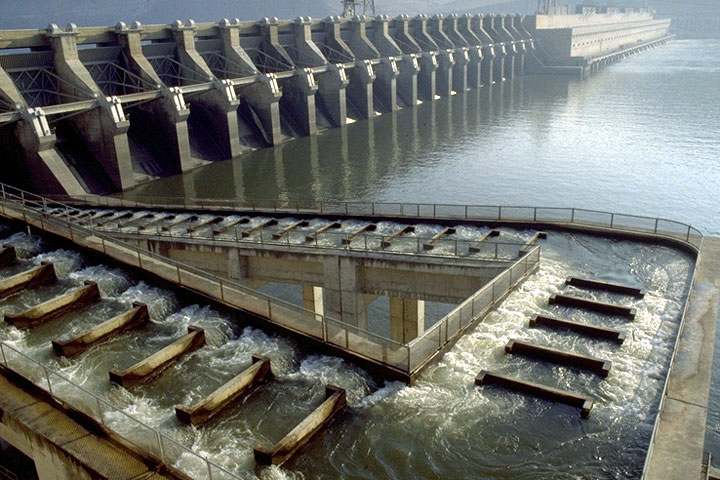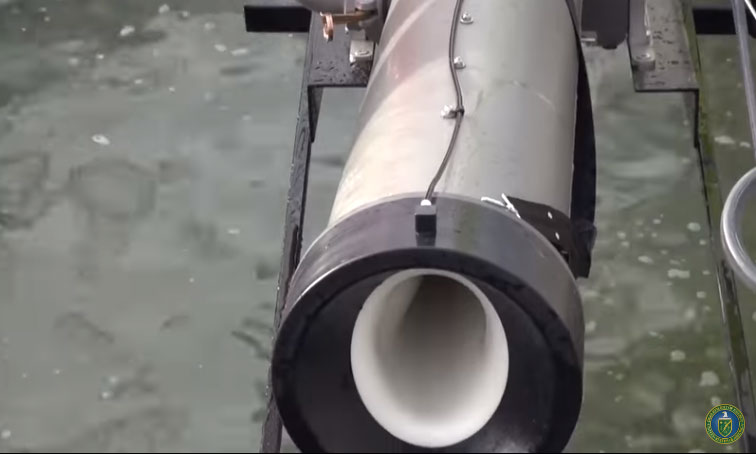Salmon Cannon
by Andy Boyd
Today, ready, fire, whoosh! The University of Houston presents this series about the machines that make our civilization run, and the people whose ingenuity created them.
The idea was both ingenious and just plain silly in equal proportions. And it helped solve an important ecological problem.
Many species of fish are born in rivers, migrate to the ocean, then years later return to their spawning grounds. Perhaps the most well-known are the many species of salmon found in the Pacific Northwest who fight their way somtimes hundreds of miles upstream only to die after spawning. Salmon have long played an important role in their ecosystems, serving as an important food source for animals and humans.

Salmon
Photo Credit: Flickr
The damming of rivers changed that. Salmon could no longer swim to their spawning grounds. Fish ladders - terraced waterways running up the side of a dam - seemed like a good idea, but only a small fraction of fish make their way up. In some places fish elevators are used. In other places trucks are loaded with fish who are then driven around a dam. To seed areas that would otherwise be devoid of migrating fish, fish-hatcheries are employed.

John Day Dam fish ladder
Photo Credit: Wikimedia
The effect on migrating fish is so significant that many environmentalists are now calling for dam removal. Other environmentalists point out that the dams are a clean source of renewable energy. And, of course, farmers rely on the water for irrigation. So what to do?
Enter Whooshh Innovations. One day the company's founder, Vincent Bryan III, observed a helicopter ferrying fish over a dam. He thought there had to be a better solution. His idea? Move fish through a pressurized tube. The idea is quite simple and has been used for centuries to transport small cannisters. The fish emerge with a fair amount of speed from the end of the tube, thus leading the invention to be dubbed the salmon cannon.

Salmon Cannon
Photo Credit: US Office of Energy Efficiency & Renewable Energy
At the time Bryan came up with the idea he was working on the design of a mechanical apple picker and as such was familiar with the means by which apples were sorted. His first fish transportation experiments were with tilapia purchased in a Seattle fish market that were fed into a tube designed for apples. The tilapia not only survived, but "seemed happy" according to Bryan. Further testing has shown that salmon who ride through the tube fare better than those who climb fish ladders, which can be exhausting and weaken the fish.
Like apples, fish can be sorted prior to entering the tube. This allows invasive species to be captured, thus addressing another very important ecological issue. And the cost of installing a salmon cannon is relatively inexpensive since there's no heavy construction. Simply run a tube from the bottom to the top of the dam and you're done. And did I mention it's fun to watch the fish fly out the top? It could become a tourist attraction.
Successful engineering come in many forms, from the exceedingly complex to the utterly simple. I appreciate both, though I have a soft spot in my heart for the simple. And if it's simple and makes me chuckle, well, all the better.
I'm Andy Boyd at the University of Houston, where we're interested in the way inventive minds work.
For a related episode, see THE INTERNET OF TUBES
TV show segment on the Whooshh salmon cannon - Click here
Eli Francovich. "Salmon Cannon: Could the Species Return to the Upper Columbia After 90 Years?" The Spokesman-Review, August 16, 2019. See also: Click here. Accessed August 26, 2019.
Ethan Siegel. "The Salmon Cannon is a Stroke of Scientific and Environmental Brilliance." Forbes (online), August 19, 2019: Click here. Accessed August 26, 2019.
This episode was first aired on August 29, 2019